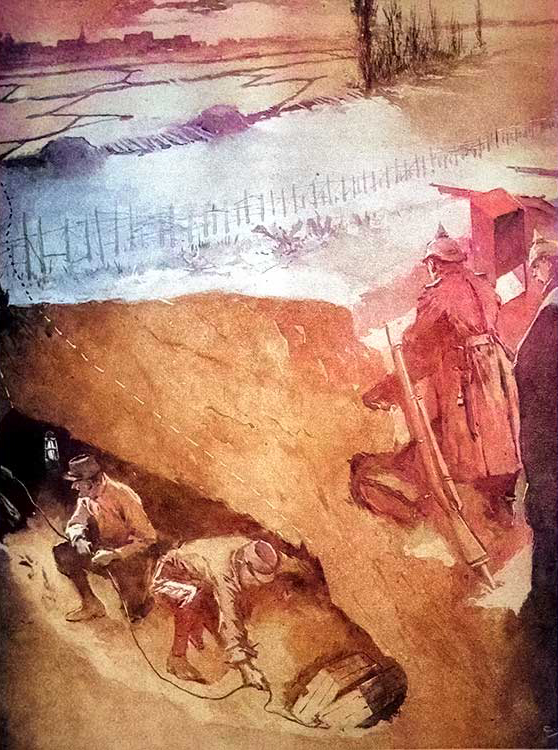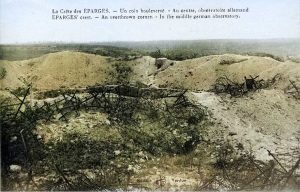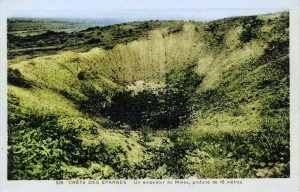
In the Argonne, the Vauquois Mound was ripped open from side to side. The explosions of 519 mines and camouflets between the spring of 1915 and April 1918 were mainly responsible.
The largest mine, loaded with 60 tons of Westfalit, exploded on May 14, 1916, killing 108 French soldiers.
On the other side, on the upper reaches of the Meuse, the Éparges Ridge saw one of the longest mine wars in history.
Indeed, there were nearly 130 mine explosions and camouflets. They shook the ground and the bowels of the land between February 1915 and August 1918.
Today the Butte de Vauquois remains the only site that bears witness to this type of fighting. You can discover the underground passages accompanied by a guide and equipped with a helmet and a flashlight.

